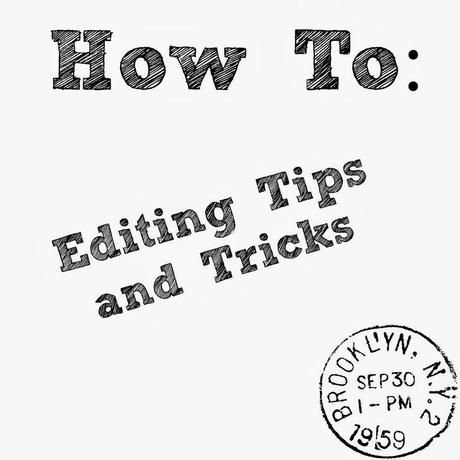 Any writer will tell you that the real challenge of writing a book is not necessarily penning the first draft - it's editing it. You see, the truth about writing is that we as authors are professional re-writers. We write books. And then we revise them. And revise them again. And revise them some more. We do this not just because there is no such thing as a perfect first draft, but because that's how it is when you're working in publishing. Over the years, I've noticed an editing pattern when it comes to writing and publishing a book. There are certain things that are always done between writing the first draft and the last. Here's a peek into how it works:
Any writer will tell you that the real challenge of writing a book is not necessarily penning the first draft - it's editing it. You see, the truth about writing is that we as authors are professional re-writers. We write books. And then we revise them. And revise them again. And revise them some more. We do this not just because there is no such thing as a perfect first draft, but because that's how it is when you're working in publishing. Over the years, I've noticed an editing pattern when it comes to writing and publishing a book. There are certain things that are always done between writing the first draft and the last. Here's a peek into how it works: - Write draft one. The primary job of any author is to write that book! During this stage, it is your duty to let the creativity flow. Write whatever your imagination tells you. But as you progress in your career, you will find yourself catching your own mistakes as you go - self-editing, I like to call it. It's an awareness of repeating words or phrases over and over again, and watching for grammar as you're writing draft one. The more you write, the more you'll be able to catch.
- Say goodbye to draft one. Yes, sorry. It's a necessary farewell, trust me. Once you have completed a manuscript, it is highly helpful to set it aside for a bit before looking at it. I've said this many times in the past, but I'm saying it again: distance between you and your work will allow you to see it with fresh eyes later on. When I write a book, I hand it over to editors and let them pore over it for a month before I go back and try to fix anything. The separation allows me to see things clearer.
- Get out the red pen. Oh, the dreaded red pen. It's actually a positive thing, so don't look at it with fear. Go back over your draft and fearlessly pick it to pieces. I've done it many times. Makes notes, ask questions about the plot line, look for repeat words or phrases, check spelling...you know the drill. Be tough on yourself - because nobody else is going to be easy on you, either.
- Do the drill. Most authors that I've known will tell you that their book went through about seven to eight drafts. Depending on the length of my book, I clock in at about the same, but there are certainly exceptions to that rule. If you're editing thoroughly, you'll probably end up at around the same number.
- Say hello to print. You will find things in a print copy that you're blind to in a digital copy. One of the final steps to publication - for me, at least - is printing out the manuscript. I will go through it with a highlighter - and so will everyone else. When that's done, I apply the changes to the book itself.
- Read it again! Oh, hey. You're not done yet. Order a printed proof of your book in book format. It's the final, ultimate test. If you've missed anything, you'll find it while you're reading through the book. Once you've corrected the proof, you've just finished the last draft!
- Publish it. You're done! Publish your glorious work of art for the entire world to enjoy.


